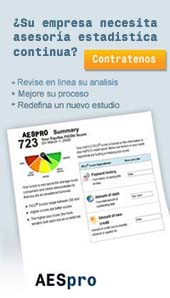Status eruption in the first’s permanent molars in children with 6 years in Concepcion, Chile: A good determinant to use preventive actions in tooth decays.
José Bustos1 & Andrea Werner2
1 Departamento de Estadística, Facultad de Ciencias Físicas y Matemáticas, Universidad de Concepción, Av. Esteban Iturra s/n – Barrio Universitario – Concepción – Chile
2 Facultad de Odontología, Universidad de Concepción – Chile, Av. Roosvelt 1550, Casilla 160-C.
The preventive actions in public health are more effective when we know the origins of a disease and the mechanisms in the behaviors of a pathologic square. This theoretical idea is able to make more significant impacts in the population, specifically within areas where resources regarding health are limited. In the specific cases of tooth decay, for example, the key indicator is the status of the first permanent molar, as a possible predictor of risk.
The eruption day is not well known, because the first’s cavities are early after the first teeth are coming in the mouth cavity. One program in odontology from the health polices is the AUGE, for children with six years old. The goal is to make establishment in prevention and rehabilitation to make the best approach in the children population, knowing the six year is the best chance to prevent the cavities in the first permanent molar.
The main goal in this research is evaluating if the six year old is a good time to make protection approaches in this important teeth, because we think in a possibility this eruption happen in a different time in the teeth development. Leaving children with out this important preventive action. In this way, we make a logistic regression model to know what is the age approached.
Other objective was to know the clinical level in the first’s permanents molars in children in Concepcion city and eventually to suggest preventive protections action in the health polices.
After to exam and register all the information in a total of 1928 children with ages between 5 and 6 years, in 43 schools from 3 different socio-economic levels. We sort the eruptive status in the first’s four permanent molars in 4 development levels with 7672 first molars inspected. Using the status of health in each child to express it in a CEO index and the space loosed produced by lose teeth’s to know statistical differences in the 3 different socio-economics levels. The dependent variable was the CEO index, space loosed produced by lose teeth’s and the space loosed in each mouth cavity. This analysis was do it using One-Way Anova (normality and equality of variances), when the assumptions don’t work, we do a nonparametric analysis.



